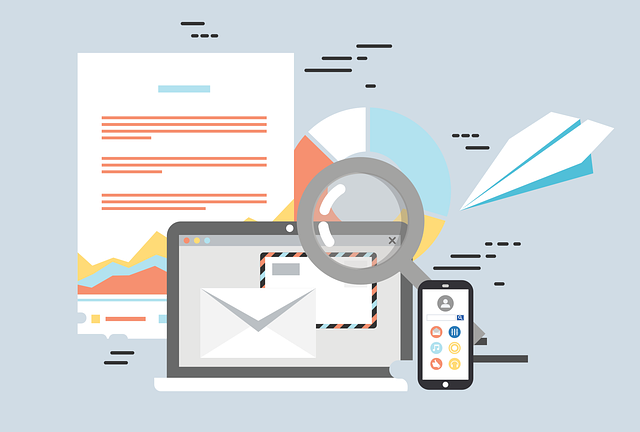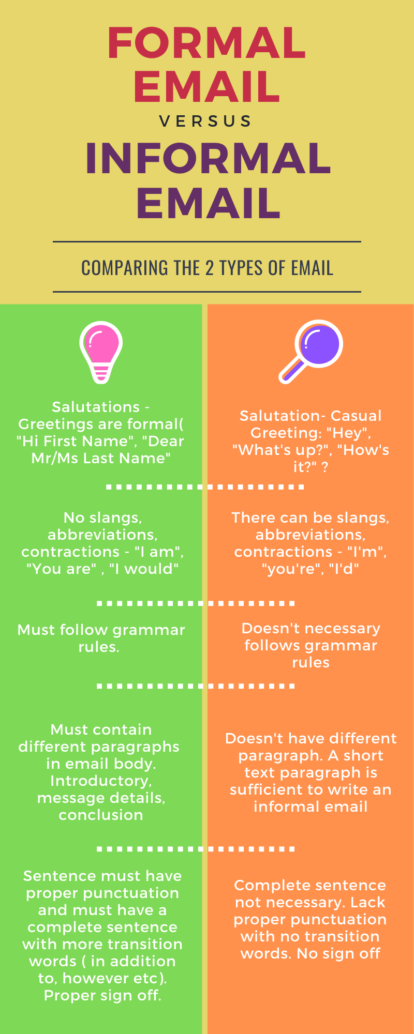All kinds of businesses, propositions are done through communication in today’s world. There are several modes of personal and business communication out of which email i.e. electronic mail is one of the most important means of communication. Just like giving captivating speech or oratory skills, email writing skills are equally important in corporate world. The beauty of email communication is such that one can communicate with anyone around the world anytime through email using free internet. Phone communication requires the recipients to be present during the time of calling but email communication doesn’t require the recipient be present at time of sending email.Thus formal email writing skills is quintessential requirement for any professionals in today’s world.
Currently almost every person in the world has an email account and every working professionals must have an email. Approximately over a billion emails are sent each day as per statistics. That’s the power of email communication. So a successful communication between two or more parties can only happen if one is adept in writing emails. So in this article let me discuss on how to write a good email. As there mainly two types of email writing: informal email writing and formal email writing. Informal email is written to someone you know personally and it doesn’t require any specific skills to write as it does not follow any structure when compared with the formal email writing skills. Let’s learn formal email writing skills.
Formal Email Writing
A formal email is written to someone you may not know. You generally send formal email to your company officials, boss,colleagues, job application, school authorities, government department or any officers. Remember any workplace requires formal email communication. Never let the your casual office environment impact your email communication. Your email must show your courtesy and decorum all the time.
You may fall into trap if you write casual email to your colleagues or boss even if the working environment is casual. Your colleagues may write casual email to you but you must always write formal email to them which shows your decorum and discipline in your writing for your own safety. Remember your work, productivity is often judged by your email communication, proactive communication among the colleagues and communication to your clients. Hence there is no place for casually written email here in workplace.
A formal email has a very defined structure, with a definite salutation (the opening part of the email), opening sentence, body , conclusion and signature sign off.
You should never make any grammatical mistake, punctuation mistakes while writing a formal email which is quite common in a casual email. Avoid using abbreviations, contractions, slang, emoticons, and other informal terminology. The tone of a formal email is different as well. An informal email may not even use complete sentences but a formal email always does.
Format of a formal email

#1 The Subject Line
Subject line is the first thing a reader notices in the inbox. It is the sole factor for any reader to decide whether to open the email. That means if the subject line is not compelling, it will result in deletion of the email without even looking at it.People build trust by reading the subject line. Both native and non native English speakers often mess up in writing a compelling subject line for their readers. The recipient judges the email through the subject line almost every time. Thus if you are writing an email to someone for the first time, make sure to write a catchy subject line as you are unknown to them.
Don’t write click-bait titles to entice/hook the readers open your email. Remember email is used for a purpose and a sender often expects reply or some sort of responsive actions from the recipient. Thus if you are using click-bait, they will simply delete your emails and block you in future.
So put some effort to make the subject line more descriptive in nature. Overall the subject line should stand out, should be clear and succinct whether you are writing formal or informal email. You can write the subject line before drafting the email body or you can write after completing the draft.
#2 Salutation
Salutation is greeting or addressing the person you’re sending the email to and it is mandatory to use it in a formal email. Remember you may use it in informal/casual email though not compulsory. Let’s see some examples,
Without a Name
If you don’t know the name of the person you’re sending email, you should make sure to have that information in place. It’s fine to address the person by title in such scenario. Here’s an example of a salutation without a name:
Dear Operations Officer, Dear Manager, Dear Sir, Dear Sir/Madam,
Addressing a group of people
If you’re sending the email to an entire group of people, you must address the entire group. Never use the term ‘guys’ in salutation to a group of people. Here’s an example below:
Dear Students, Dear People
If you know the person’s name as well as his/her title, you can address them by their name and their title together. Here’s a sample formal salutation for an individual:
Dear Professor Smith, Dear Office Oliver
Addressing anonymous person
It is absolutely okay to use this salutation when you have no idea of person’s name or title in few occasion to use this salutation:
To whom it may concern,
Contrast the formal salutation examples with that of informal salutations:
Informal Salutation for a Group
Hey Guys
Hey Buddy,
#3 Introduce Yourself
You will introduce when you are communicating with the recipient for the first time. You don’t have to give a big introduction. A short and simple intro is enough to build a sense of trust and impression that will make them read your complete email.
I am Jeremy Cooper, a consultant in Techtonus Software Ltd.
This is Jeremy Cooper, a consultant in Techtonus Software Ltd.
First example builds more trust than the second one although you can use any of them.
#4 Purpose
Clearly mention your purpose of writing the email and don’t bore and exaggerate anything with unnecessary stuff. If you are unable to let them know your purpose of sending email, they will simply neglect your email.
Dear Mrs. Brown,
I am writing to apply for a junior developer role in Techtonus Software Ltd.
The purpose of email is clearly served in the above email.
#5 Main Body of the message
You give the full details in the main body of the email to the recipient. Write in small paragraphs and organize the content well and proofread properly before sending the email. Be expressive and cogent in your thoughts so the main purpose and explanation is served in the email.
Thank you for bringing this to our attention. Please ensure you keep informing us about any exigent issues like this when they occur in subsequent times.
#6 Sign-off
You must have a short conclusion paragraph ( maybe a line and sign off using any any the following :
- Yours cordially
- Best regards
- Yours sincerely
- Respectfully
- Yours truly
- Yours faithfully
#7 Signature and closing
How you end a formal email is very important in determining your authenticity and authority as a person and a professional. The way you prepare the closure template makes a final impression on the recipient. Thus whenever you are writing an official email, you need to confirm your authenticity by signing with your full name, the name of your business or your designation in a company followed by your email address and website address(if you have any). You may also give your phone number in the end. You can also use a professional signature template to have a good impact on the recipient. Even if you do not have a professional template, you include the above mentioned points at the closure of your email ( full name , title , contact info – email address, website)
In contrast, an email closing may be extremely casual for an informal email. In some instances where the recipient is well known to you, you may even omit the email closing.
The most common way to start a formal email closing is with the word ‘sincerely’. It may be a common closing, but it’s also a safe closing. Here’s an example of a formal email closing:
Sincerely,
Peter Roy
Senior Technician at XYZ Company
Email address
website url(if you have one)

Difference between Formal Email and Informal Email (Casual informal) – pictorial representation

Formal mail Sample
Subject line- Urgent Meeting scheduled today at 5 PM
Dear Ron,
This is to inform you that a meeting has been scheduled to discuss on the active task which is pending for last couple of days.
I would like to discuss the task that was supposed to be delivered yesterday. It got delayed by a day. Is there any active reason for the delay? Have you received all the documents from the architect? Is there any dependencies that need to be addressed to the client?
Kindly make yourself available in the desired time so we can discuss and close the issue as soon as possible.
Best Regards,
XYZ
Manager,
Email Address
Informal Email
Subject Line- See ya 8 PM
Hey guys,
Tonight, I am hosting my birthday party at my house. Be there by 8 PM. See ya.
Informal email- You can see in the above example: a casual email with no description or conclusion. Simply conveying the message to the recipient.
Conclusion:
However both formal and informal email are used widely across the globe. But formal email writing definitely requires skills which is very necessary to communicate in the corporate and professional life.





As always Jamie great info right here! Thanks for putting this together.
Thank you April.
Comprehensive write up you have here! Thanks for sharing.
Thank you so much! It is sometimes a struggle to send professional emails but this was invaluable.